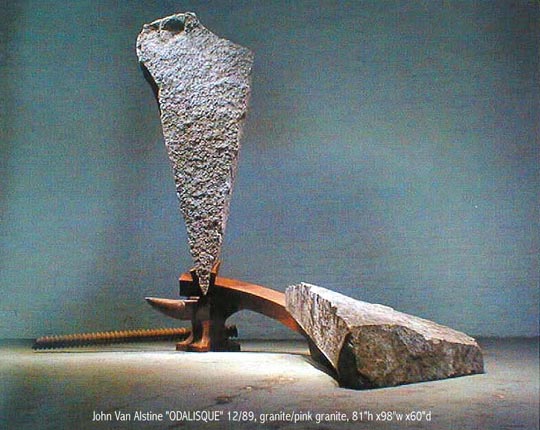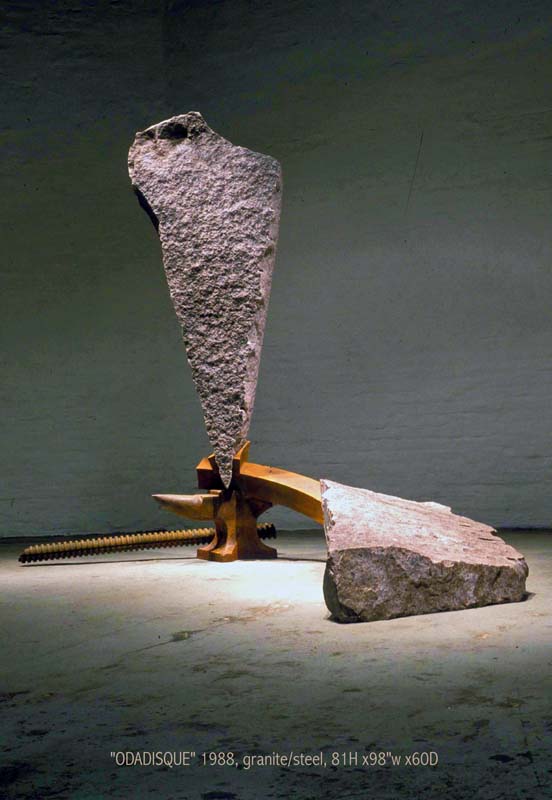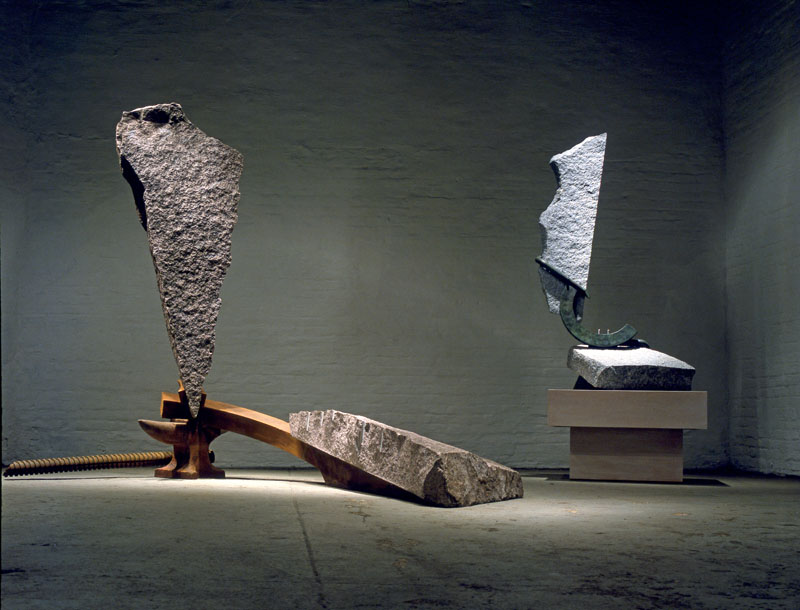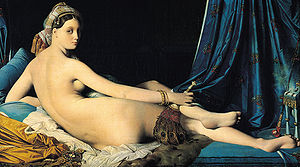
ODALISQUE I
1989, granite /steel, 81"h x98w x60'd
available


instlled - We NY 2014



Jean-Auguste-Dominique INGRES (Montauban, 1780 - Paris, 1867)
La Grande Odalisque
1814
Ingres transposed the theme of the
mythological nude, whose long tradition went back to the Renaissance, to an
imaginary Orient. This work, his most famous nude, was commissioned by Caroline
Murat, Napoleon's sister and the queen of Naples. Here, Ingres painted a nude
with long, sinuous lines bearing little resemblance to anatomical reality,
but rendered the details and texture of the fabrics with sharp precision.
This work drew fierce criticism when it was displayed at the Salon of 1819.
Discreetly seductive
This woman lying on a divan is offering herself because she is nude and turns her face towards us. The painting's title, which means "harem woman," and the accessories around her conjure up the sensuous Orient. But the woman is also discreet because she shows only her back and part of one breast. The nude was a major theme in Western art, but since the Renaissance figures portrayed in that way had been drawn from mythology; here Ingres transposed the theme to a distant land. The subject of the odalisque fascinated Boucher in the eighteenth century and was later chosen as a theme by Théodore Chassériau (1819-1856), one of Ingres's pupils. Throughout his career, many of Ingres's works feature Orientalist themes, such as The Turkish Bath (Louvre), which he painted towards the end of his life. The female nude, historical scenes, and the portrait were Ingres's favorite genres.